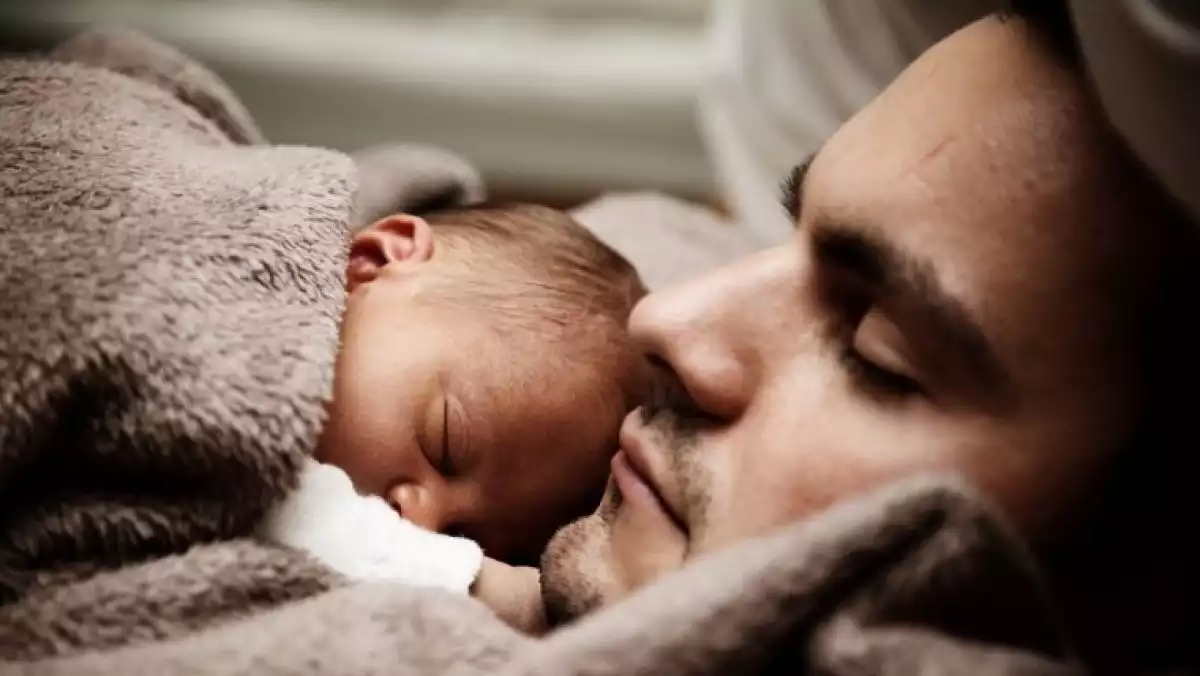
When you hear the word 'attachment,' family is likely the first thing that comes to mind. Socialization usually occurs for the first time in the family environment: here the child establishes bonds with different individuals that will have a lasting impact on their behavior.
Personal traits, behaviors, and interactions are closely related to the type of attachment formed between parent and child. Besides, the way that a person manages and expresses emotions and chooses a future partner is also affected by this.
Below, we break down what attachment is, the types, and what this means for the child as he or she grows up. Also, we share the main behaviors associated with each attachment style and how this impacts romantic relationships.
What is the attachment theory?
Attachment is the connection made between mother and child (or the primary caregiver) from the moment the baby is born. Its function is to ensure the safety of the newborn. This plays a crucial role in the child's psychological development and personality later on.
Attachment style in early childhood could lead to two different phenomena that will have an impact on how dependent and fearful this person will end up being. The exploratory and affiliative behavioral systems are what determines this.
The exploratory system is what allows the baby to contact the physical environment through his or her senses: by touching, looking, and trying to put everything they find in their mouths. Besides, if they aren't afraid to spend some time with other people; this is because of their affiliative system.
According to López (2009), attachment is made up of three factors: the mental construct that permits a relationship with a sense of belonging and unconditionality to form, the emotional bond that happiness and well-being brings, and an attachment behavior system focused on maintaining privileged contact.
So, according to Moneta (2014), the definition of attachment can be summed up in the following points:
- It’s the first relationship of the newborn with the main caregiver (often the mother), ‘main’ being the person that’s consistently receptive to the child’s needs.
- This doesn’t end after birth or breastfeeding, but rather continues in emotional relationships throughout this person’s life.
- Related to the previous point, attachment to significant individuals stays with us throughout development, and even into adulthood.
How are attachment styles established?
With this in mind, the baby observes, touches, and reacts to everything that the primary attachment figure says and does from birth; generally speaking, this tends to be the mother. At about 6 months, the baby becomes attached to the person that he or she has the most contact with and a fear of strangers starts to appear.
This is what gives the child a sense of security in threatening situations. To be more specific, proper attachment is what allows the little one to explore the world with ease knowing that the person that they are attached to will be there to protect them.
When this isn't the case, fears and insecurities start manifesting themselves in the child's behavior. This has an impact on his or her interactions and reactions to others, and finally, on this person's understanding of the world.
According to this theory's primary author, John Bowlby, attachment is a close relationship established upon birth, and that remains until death, and therefore lasts a lifetime, according to his 1979 studies.
John Bowlby’s attachment theory
John Bowlby (1907-1990) was an English child psychiatrist and psychoanalyst. He dedicated a significant part of his life to studying the effects of the relationship between the primary caregiver and child, on the mental health of the child (both short and long-term). In other words, he proposed that said relationship had immediate effects as well as long-term ones into adulthood.
To analyze this, Bowlby resumes studies that he previously did for the American psychologist Mary Ainsworth, who observed different interactions between mother and child under a standardized procedure that’s known as the Strange Situation.
Three main attachment styles came from these observations: secure, avoidant, and ambivalent. Bowlby worked with Ainsworth and then later went back to these theories to broaden these classifications.
After carrying out studies with children institutionalized for theft, and also those separated from their mothers at an early age, the psychiatrist concluded that the resilience of the minors had been impacted by the connections they made during the first years of their lives.
Such connections are usually formed with the mother since she is usually the primary caregiver, but this can also happen with someone else. With this in mind, the type of relationship established between the young infant and his or her caregiver has a crucial impact on the behavior and emotional development later on.
In spite of being established during infancy, attachment continues into adulthood, whether towards one’s mother or another meaningful person. On the same note, the attachment style made during childhood can be visible in the fears or insecurities of the adult, and in their way of confronting them.

4 Attachment styles
In child-rearing literature, many studies analyze the attachment theory styles and how this has a lifelong impact. Keeping this in mind, we know that one's attachment style will affect adult behavior in different ways.
1. Secure attachment
This style is unconditional: the child knows that their caregiver won't let them down. They feel loved, accepted, and valued. Children with a secure style are active and interact more confidently with their environment. There is emotional harmony between the child and the attachment figure.
People with secure attachment styles in childhood tend to have equally healthy relationships in adulthood. It isn't difficult for them to build relationships with others and they don't fear abandonment. Dependency is reciprocal and they aren't afraid of being alone.
2. Anxious-ambivalent attachment
In this case, the child can't trust his or her caregiver and feels constantly insecure. This is why little ones with anxious-ambivalent children need the approval of their caregivers continuously, and they are always watching to make sure that they aren't abandoned. They explore their environments apprehensively and make sure that they don't stray too far from the main caregiver.
Adults who attached in this style as babies, often fear that their partners don't truly love them. It's hard for them to interact the way that they'd like to with others since they expect more closeness or connection than they give. So, in adulthood, this style is generally emotionally dependent.

3. Avoidant attachment
Children with avoidant attachment styles have accepted that they can't rely on their caregivers, which pains them. These little ones learn to live life feeling unloved and undervalued. A lot of times they do not express nor understand emotions and avoid intimate relationships.
As in childhood, adults with avoidant attachment reject intimacy and often struggle with relationships. Those in relationships with someone that attach this way, often feel a lack of closeness.
4. Disorganized attachment
This type is a mix between the anxious and avoidant styles and the child generally acts in contradictory and inappropriate ways. These children tend to be explosive and do things like breaking toys and have a hard time getting along with their caregivers.
They try to avoid intimacy, but they have a hard time managing their emotions, and this causes them to get out of control emotionally in a negative way that keeps them from expressing positive feelings.
Adults with this style tend to harbor frustration and rage. They don't feel loved, and they seem to reject relationships, but deep down, actually, this is what they want the most.
Why flexibility in relationships is important
All of this needs to be seen from an inclusive perspective. This means that all interactions from birth until adulthood determine one's current behavior. Besides, this isn't something static or that changes at the same rate over time for everyone.
In this sense, just because someone had an anxious attachment style as a baby doesn't mean that they will necessarily be insecure for life. Friendships, relationships with co-workers, and romantic relationships also impact attachment and the role that this person will take on with new figures.
Besides, in a relationship, everyone's behavior is affected by the other party's demeanor. So, someone who is avoidant could 'learn' to love if their partner or other loved ones with a secure style, like a circle of close friends that are in good psychological health have a positive impact on them.
It’s important to point all of this out because currently, multiple psychosocial factors have significant consequences in forming primary connections. These factors often come from the individual will of these people and caregivers.
For example, the lack of labor conciliation where workers that are mothers are forced to leave their little ones with other people (something that makes many of them anxious), as well as the absence of these other people to help to care for their children or social services to make up for it.
This makes it clear that the task of forming a secure attachment style competes with different actors, not just the mothers, fathers, or significant close figures. In any case, the important thing is to develop useful strategies to generate security, with the resources available to you.
References
Bowlby, J. (1977). The making and breaking of affectional bonds. The British Journal of Psychiatry, 130(3): 201-210.
López, F. (2009). Love and heartbreak: the romantic and affectionate attachment and separation processes. Madrid: Biblioteca Nueva.
Monet, E. (2014). Apego y pérdida: redescubriendo a John Bowlby. Revista chilena de pediatría, 85(3): 265-268.
